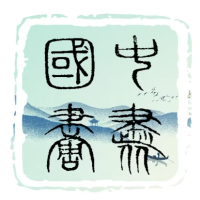画家于云涛,庚寅岁生于天津,自幼受家训薰染,渐染丹青之趣。幼时顽劣,常受父责,然每执笔作画,神思凝定,纸上流光溢彩。年幼之时,常于黑板上默绘师容,形神兼备,得同窗赞叹,及至铃声乍起,急忙拭去。”弱冠之年,云涛携画笔颜料,较诸同侪,已然别有天地。

己丑之岁,十六载,云涛怀抱家国之志,应时代号召,背起行囊,远别亲友,西行万里,入疆参与建设兵团。每自报家门,必言:“吾乃兵团画家。”此言朴实,然饱含情怀,铭刻于心。彼时,云涛与土地相系,心中志业,与边疆之苦乐共融。历经三十七载寒暑,云涛以青春热血,筑就一梦,绘成斑斓画卷,漫布幽香。当年石河子,不过荒野小镇,尚未有今之繁华。四方青年,齐聚于此,顶烈日,抗风雪,开辟荒原,筑起楼台。云涛,天津壮士,栉风沐雨,历尽艰辛,植根此土。回首往昔,曾言:“吾无愧津门子弟!”此语中,坚韧与骄傲,溢于言表。
不论事务繁忙,于云涛常于空闲之际,闭门画室,以静谧为心灵栖所。公务之余,挥毫泼墨,记录凡尘点滴,捕捉心中灵感。数十载间,作品累累,有上千幅,万余张写生,皆见诸各级报刊,皆为其执着不懈之见证。旁人叹曰:“此人真不易!”或言画者潇洒自在,乃“玩之艺术”。云涛深谙其道,知画道非此。他视画者为“苦行僧”,追求真谛,携虚无梦想,甘受孤寂与艰辛。身心行于漫长艺术之途,默然探索,终成不朽之碑。三十余载,无论环境恶劣,生活艰辛,于氏始终未弃画笔。于中锤炼技巧,亦记录兵团岁月。其笔墨鼓舞战友,赋艰苦之中以欢乐与享受。

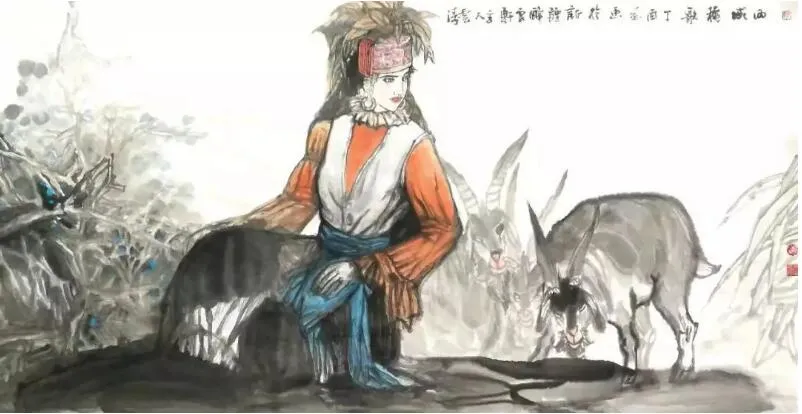
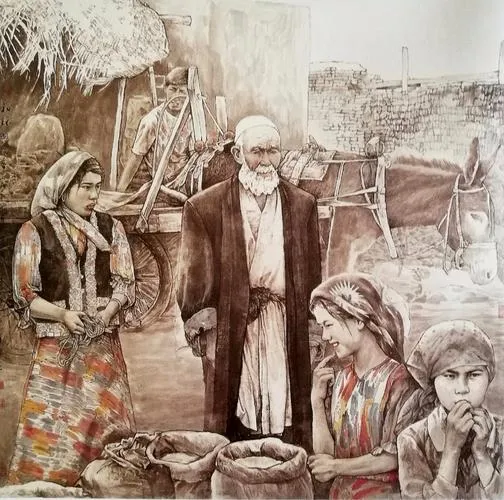
新疆之境,因其地势独特,资源丰饶,素为艺坛所称颂,誉之为“金矿”与“摇篮”。云涛自新疆而起,得天时地利,遂成画坛翘楚。其少时于海河之畔天津启蒙,然毕生心血倾注于西域大地。新疆之山川,民族之风情,人物之神韵,皆为其灵感所依,激情所系。常言“吾为兵团画工,新疆画匠”,言简意赅,心志毕现。其所作“西域风情中国水墨人物”系列,既合神韵,又透人情,画中浮现西域众生,乐天机敏,豪放坚毅。
云涛笔下人物,举止神态,皆含蓄蕴藉。此含蓄之风,使其画作超越俗世浅陋,不止于表面风情,遂探入传统文化核心,成“大中之象”。画作虽植根新疆,亦超脱地域局限,承袭中华,更具广博气象。其创作,不露锋芒,自有深蕴。此独特之道,备受同道推崇,云涛由此立于画坛,号为“西域风情水墨人物之代表”。
论画法,云涛之笔,或严谨凝重,或随性挥洒,二者并行不悖。其大作,犹如丰碑,气势巍然,历久不衰;其小品,若佳酿,芳香馥郁,回味悠长。笔墨异趣,皆见其心,西域众生图景,悉现纸上,呼之欲出。
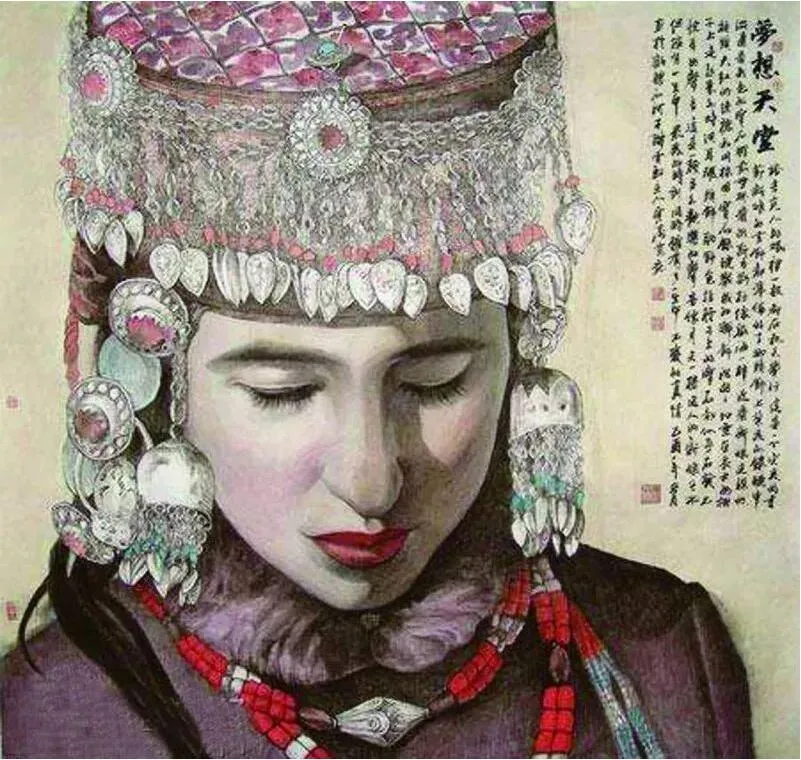

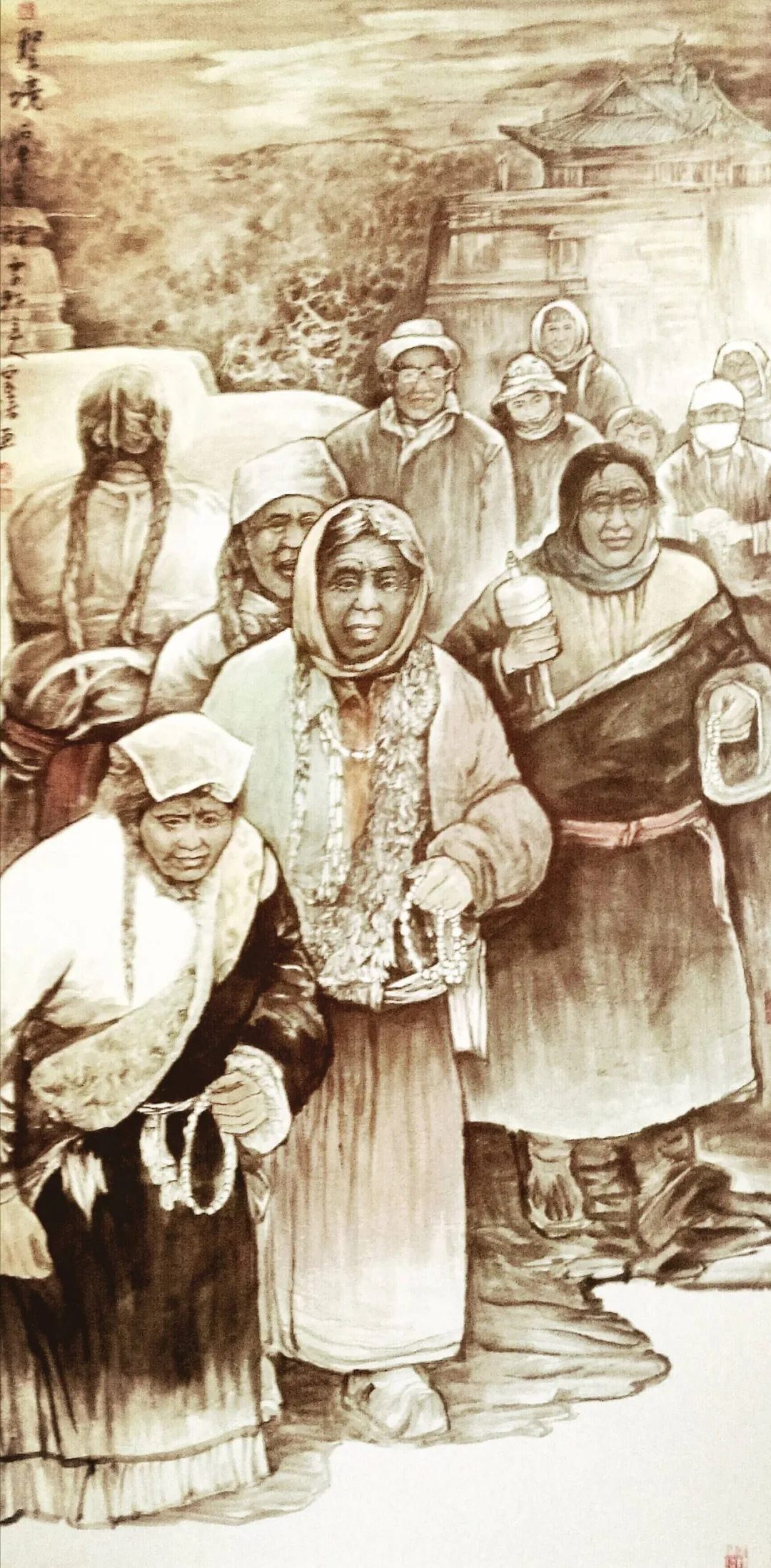
于氏人物画中,取徐,蒋笔墨之法,参工笔之妙,自创一格。《草原盛宴》一作,融光影明暗之理,兼以个人意趣,风格独具。此作弃用线条,不循常规。云涛言:“中华文化写意为本,线条乃物象简化,写意至上。然写实至极,须抛却此象。”书画高境,在于气韵,重在意境,写意常优于写实。云涛作画,工细严谨,兼得神韵。其作捕捉西域民俗,寥寥数笔,传人物神情,简约而蕴深。笔下西域少女,兼有仕女柔美与西域高鼻深目之特,形神兼备,耐人寻味。服饰装扮,举手投足皆映西域风骨,铸就精神之象。
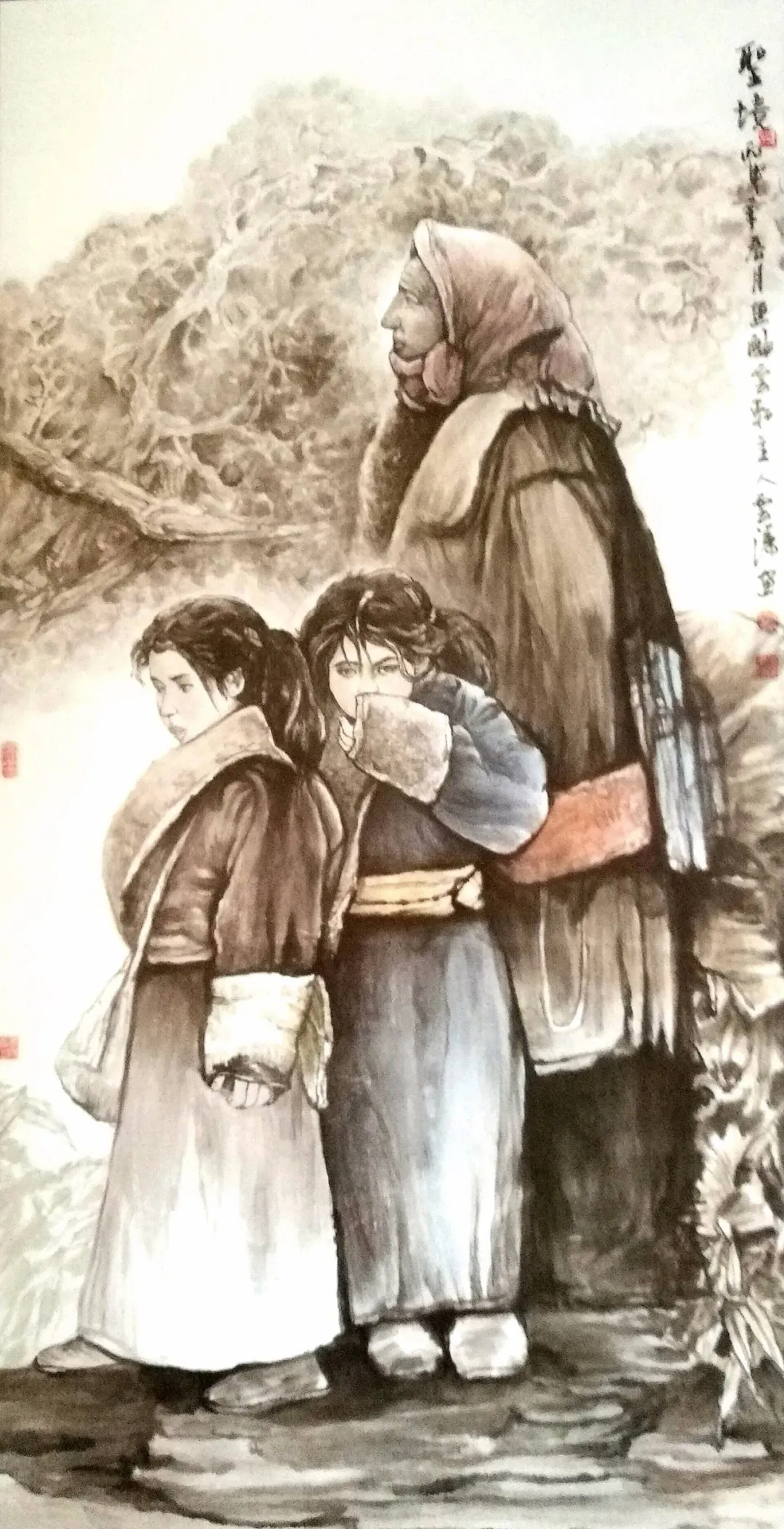
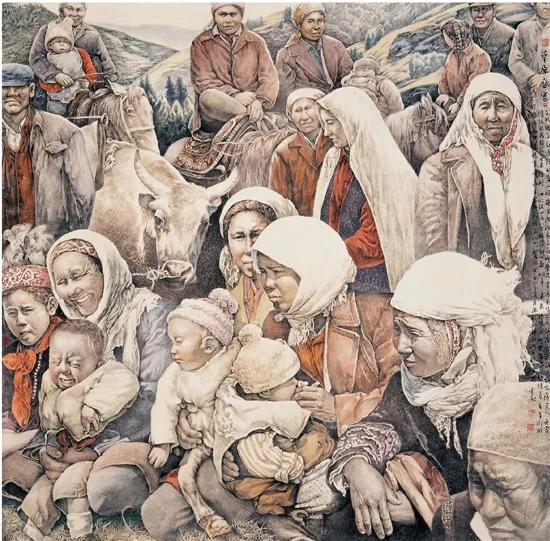
方家评黄胄,言其有西域情结,云涛亦如是。其成就根植西疆热土,情系兵团,眷恋西域风情。年年往返写生,数十载速写磨砺,锻慧目,练精手,速写升华为雅艺,登峰造极。云涛言:“新疆写生,非为技法增进,亦非仅为搜集素材,而因心灵震撼。敬佩其在困境中坚毅存续,虔诚为其画像:如壮士之健,少女之纯,老妪之善,老翁之朴,稚子之真,皆深感动于我。”
云涛人物画风,姿态内敛,神情含蓄,异于同道。他画人物,不囿于一域,不限于一俗,既融西域风情,又超脱地域局限。此法既避浅露,又涵文脉精髓,成就独到,自成一体。
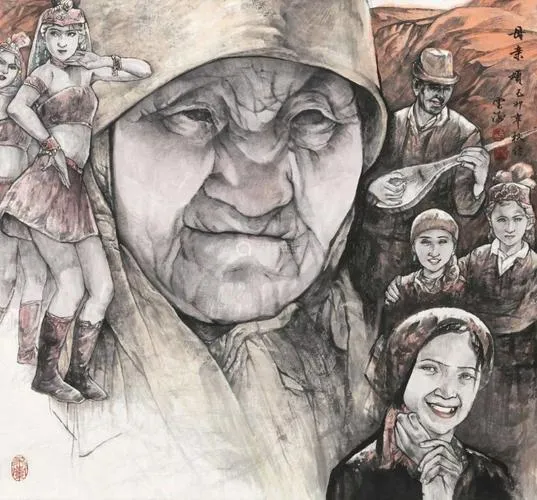

Expressing Emotions Through Vibrant Ink: Depicting the Graceful Charms of the Western Regions
The painter Yu Yuntao was born in the year of Gengyin in Tianjin. From an early age, he was influenced by his family, gradually developing a passion for painting. As a child, he was mischievous and often reprimanded by his father, but whenever he picked up a brush, his mind would calm, and his work would radiate brilliance on the paper. During his youth, he often secretly drew portraits of his teachers on the blackboard, capturing both form and spirit, earning the admiration of hismates. When the bell rang, he would quickly erase the drawings, while the teacher would softly say, "This drawing is truly lifelike, erase it quickly." By the time he reached adulthood, Yu Yuntao had already distinguished himself from his peers, carrying with him brushes and paints, venturing into a world of his own.
In the year of Jichou, at the age of sixteen, Yu Yuntao, filled with a sense of patriotism, responded to the call of the times. He packed his bags, bid farewell to his family and friends, and traveled thousands of miles westward to join the construction corps in Xinjiang. Whenever he introduced himself, he would humbly state, "I am a painter of the Corps." These simple words, though modest, were imbued with deep emotion and etched in his heart. At that time, Yu Yuntao's destiny became intertwined with the land, and his aspirations were fused with the hardships and joys of the borderlands. Over thirty-seven years, he used his youth and passion to build a dream, painting vibrant canvases filled with a lingering fragrance. Back then, Shihezi was merely a barren town, far from the prosperity it enjoys today. Young people from all over the country gathered there, braving the scorching sun and freezing winds to reclaim the wilderness and erect buildings. Yu Yuntao, a resolute man from Tianjin, endured hardships and became rooted in this land. Reflecting on those days, he once said, "I have not brought disgrace to the people of Tianjin!" These words conveyed his resilience and pride.
No matter how busy he was, Yu Yuntao would always find time to retreat to his studio, a quiet haven for his soul. In his spare time, he would paint, capturing the minutiae of life and the inspirations of his heart. Over the decades, he produced countless works, with thousands of paintings and tens of thousands of sketches appearing in various publications. His creations piled up like mountains, and the numerous certificates bore witness to his unwavering dedication. Onlookers often exclaimed, "This man is truly remarkable!" Some say that painters live a carefree life, treating painting as a form of play. However, Yu Yuntao understood that true artistry was far more profound. He likened painters to ascetics, pursuing the truth, carrying elusive dreams, and willingly enduring solitude and hardship. He walked the long road of art with both body and soul, silently exploring, and ultimately became a monument in the world of art. For over thirty years, regardless of harsh environments or difficult living conditions, Yu Yuntao never abandoned his brush. Through his rigorous practice, he not only honed his skills but also documented the life of the Corps. His brushwork inspired his comrades, bringing joy and artistic enjoyment amidst the hardships.
The land of Xinjiang, with its unique geography and abundant resources, has long been celebrated in the art world, earning the titles of "gold mine" and "cradle." Yu Yuntao rose to prominence from Xinjiang, taking advantage of its favorable conditions and becoming a leading figure in the art world. Though his artistic journey began by the Hai River in Tianjin, his lifelong dedication was poured into the vast lands of the Western Regions. The mountains and rivers, the diverse cultures, and the spirit of its people all served as the foundation of his inspiration and the source of his passion. He often said, "I am a painter of the Corps, a painter of Xinjiang," succinctly expressing his dedication and resolve. His "Western Regions Ink Figure Series" not only captured the spirit of his subjects but also conveyed their humanity, bringing to life the joyous, witty, bold, and resilient characters of the Western Regions.
In Yu Yuntao's works, his characters' gestures and expressions are marked by restraint and subtlety. This restrained style allowed his paintings to transcend the superficiality of worldly concerns, delving into the essence of traditional culture, thereby achieving a "great and central vision." Although his works are rooted in Xinjiang, they transcend regional limitations; while they inherit the essence of Chinese culture, they also embody a broader vision. His creations do not flaunt their brilliance, yet they are deeply profound. This unique approach has garnered him the respect of his peers, and Yu Yuntao has established himself in the art world as a representative of the "Western Regions Ink Figure" genre.
Regarding his technique, Yu Yuntao's brushwork can be either rigorous and weighty or spontaneous and free, with both approaches harmoniously coexisting. His grand compositions are like monuments, majestic and enduring, while his smaller pieces resemble fine wine, aromatic and rich, with a lingering aftertaste. The varying styles of his brushwork reveal his inner world, vividly portraying the lives and spirits of the people of the Western Regions, bringing them to life on paper.
In his figure paintings, Yu Yuntao adopted techniques from masters like Xu Beihong and Jiang Zhaohe, integrating the intricacies of meticulous brushwork to create his own unique style. His work "Feast on the Grasslands" blends the principles of light and shadow with his personal artistic sensibilities, resulting in a distinct style. This piece abandons the use of lines, breaking from conventional norms. Yu Yuntao once remarked, "Chinese culture is fundamentally expressive, with lines representing a simplified abstraction of objects and serving as the pinnacle of expression. However, to achieve true realism, one must eliminate this abstraction." The highest achievement in Chinese painting lies in the pursuit of spirit and atmosphere, with expression often surpassing realism. Yu Yuntao's paintings are meticulously crafted yet imbued with spirit. In his work "Clear Spring," he captures the customs of the Western Regions with a few simple strokes, conveying the essence of his subjects with brevity and depth. His depictions of Western Region maidens combine the delicate beauty of traditional Chinese ladies with the distinct high noses and deep-set eyes of the region, creating figures that are both physically and spiritually compelling. Every gesture, every detail of attire, reflects the spirit and character of the Western Regions, shaping a unique spiritual image.
Critics have praised Huang Zhou for his deep connection to the Western Regions, and Yu Yuntao shares this affinity. His accomplishments are deeply rooted in the rich soil of Xinjiang, with a heartfelt bond to the construction corps and a deep affection for the culture of the Western Regions. Year after year, he travels to southern Xinjiang to paint from life, honing his observational skills and refining his craft over decades of sketching. His sketches have evolved into an elegant art form, reaching the pinnacle of artistic achievement. Yu Yuntao once said, "Painting in southern Xinjiang is not merely about improving technique or gathering material; it is about the profound impact on the soul. I admire their resilience in harsh environments, and I paint their portraits with reverence: the strength of young men, the purity of maidens, the goodness of elderly women, the simplicity of old men, and the innocence of children—all deeply move me."
Yu Yuntao's style of figure painting is characterized by restrained posture and subtle expression, setting him apart from his contemporaries. His depictions of people are not confined to a single region or tradition; they incorporate the spirit of the Western Regions while transcending regional boundaries. This approach avoids superficiality, instead embodying the essence of Chinese culture, leading to a distinctive style that is uniquely his own.
责任编辑:苗君
